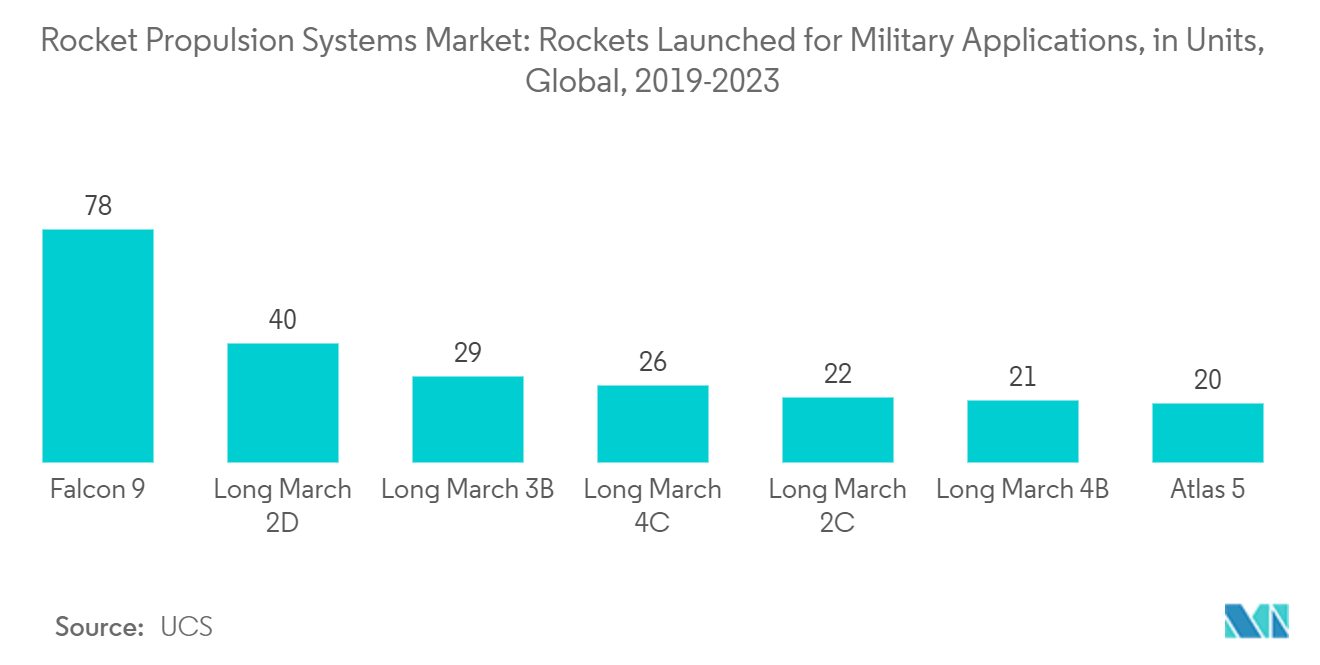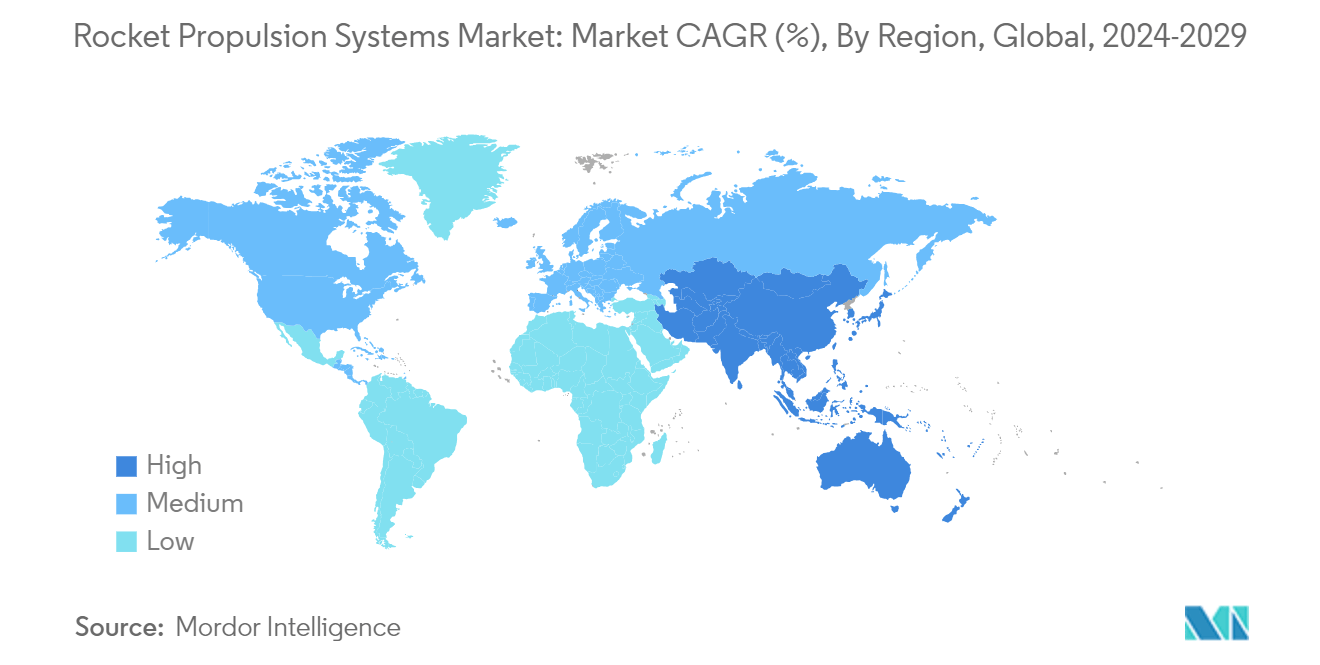Market Trends of Rocket Propulsion Systems Industry
The Military Segment is Expected to Exhibit Fastest Growth During the Forecast Period
The rocket propulsion market is witnessing a surge, driven primarily by the rising number of satellite launches, especially for military applications. Between 2019 and 2023, 435 satellites were launched, each requiring a specific launch vehicle tailored to its mission and orbit. Atlas 5, Falcon 9, various Long March rockets, Soyuz-2.1b, and Vega have emerged as the preferred choices for these missions.
Major global economies are significantly increasing their allocations to space exploration, focusing on launching satellites and developing advanced rocket engines, particularly for military use. In a notable development in April 2024, ASTROBOTIC TECHNOLOGY, INC. and the US Air Force Research Laboratory (AFRL) Rocket Propulsion Division signed a Cooperative Research & Development Agreement (CRADA). This partnership aims to enhance their capabilities, emphasizing cutting-edge technologies such as liquid and rotating detonation rocket engines (RDREs). It includes on-base rocket flight testing, leveraging Astrobotic's reusable rockets.
The global space arena has seen intense competition for decades, with nations ramping up space launches and research investments. These investments aren't just about exploration; they are strategic moves to lead in emerging space technologies. For instance, in March 2024, China's CASC, a critical state-owned space and defense agency, unveiled plans for a new series of Long March rockets. The Long March 6C, an upgraded version of the Long March 6A, is noteworthy for being China's only rocket with a liquid propellant core and solid-fueled side boosters. With similar ambitious projects in the pipeline from other space agencies, the rocket propulsion systems market is set for significant growth in the coming years.

Asia-Pacific to Witness the Highest Growth During the Forecast Period
Investments in space exploration in the Asia-Pacific, notably from countries like China and India, are set to surge in the coming years. India, in particular, is focusing on enhancing its domestic space launch capabilities. A tangible sign of this commitment was the Indian government's announcement in February 2024, allocating INR 13,042.75 crore (USD 1.55 billion) to the Department of Space for the FY 2024-2025. This marked a notable increase of INR 498.84 crore (USD 59.4 million) from the previous year.
Alongside government efforts, the region's space sector is witnessing a rise in private investments. Both startups and established firms are actively developing state-of-the-art rocket engines. For example, in October 2023, Indian startup Skyroot Aerospace unveiled its Vikram-1 rocket, designed to deploy satellites into low earth orbit by early 2024. Similarly, in May 2024, an IIT Madras-incubated startup launched the world's first rocket with a single-piece 3D printed engine from Sriharikota. This mission, the debut for Agnikul, serves as a technology showcase, validating their systems for the upcoming 'Agnibaan' orbital launch vehicle.
Further bolstering the region's momentum, in April 2024, China's CASC successfully conducted two ground ignition tests for its 130-ton reusable liquid oxygen kerosene engine, showcasing significant advancements in propulsion technology that are poised to drive market demand in the coming years.


